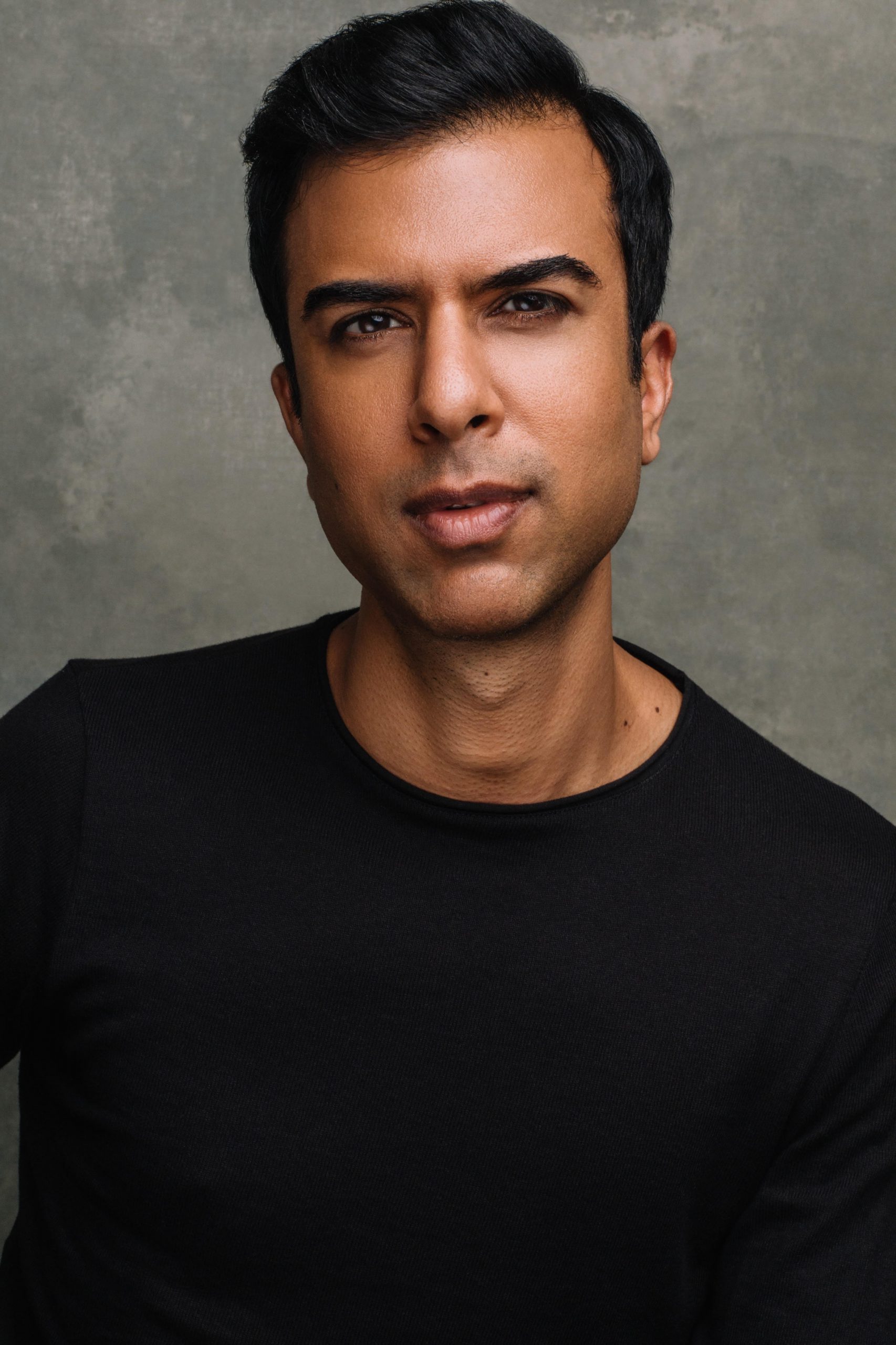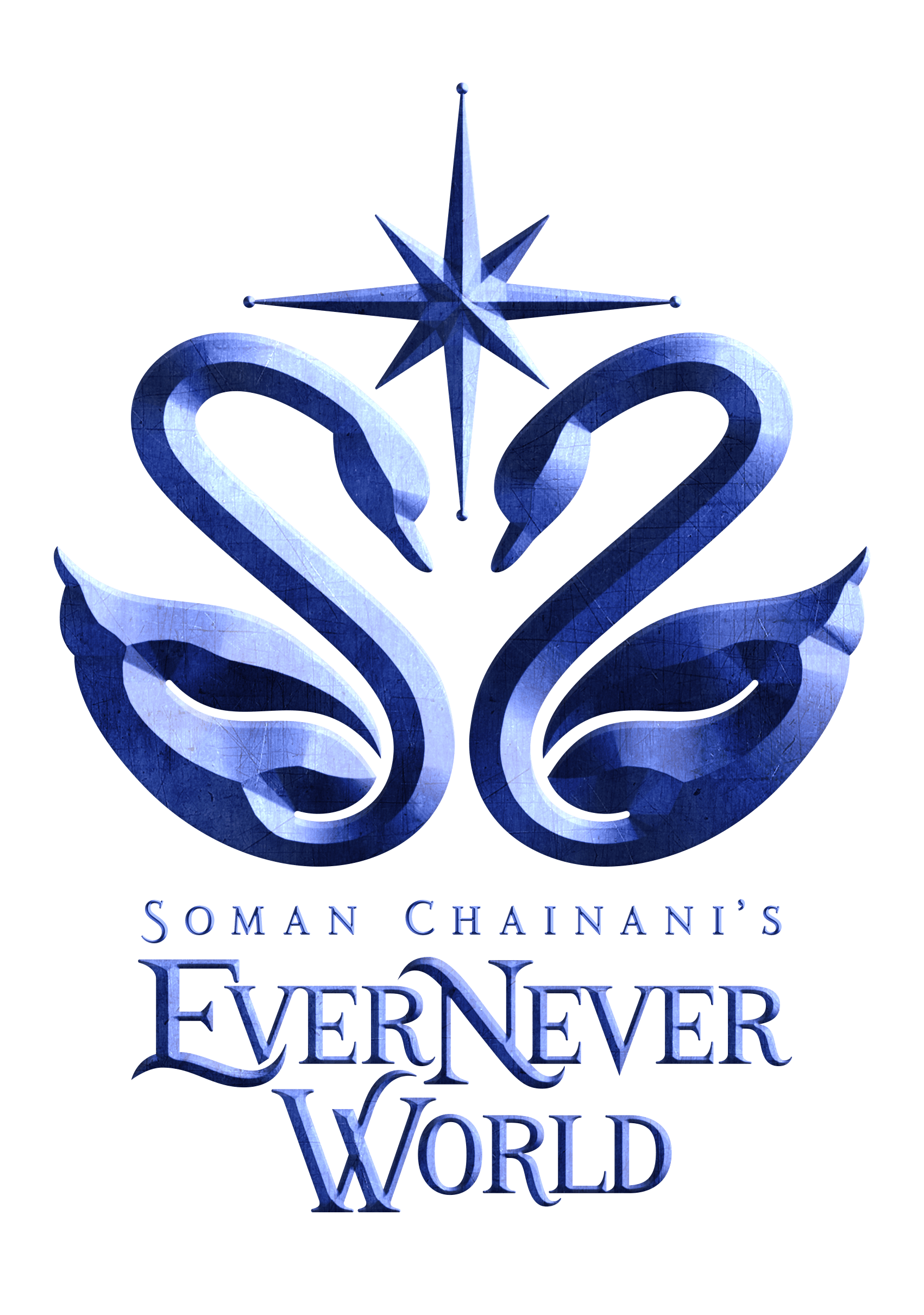
SOMAN CHAINANI
Soman Chainani’s debut series, THE SCHOOL FOR GOOD & EVIL, has sold over 4.5 million copies, been translated into 35 languages across six continents, and has been adapted into a major motion picture from Netflix that debuted at #1 in over 80 countries.
His book of retold fairytales, BEASTS & BEAUTY, also debuted on the New York Times Bestseller List and is slated to be a limited television series from Sony 3000.
EverNever World, his decade-long franchise of fairy tales and fantasy, continues to expand. Together, these books have been on the New York Times Bestseller List for 50 weeks.
In 2026, Soman unveils a brand new universe with YOUNG WORLD, a global political thriller.
In his career, Soman has visited more than 800 schools around the world, where he continues to share his secret with students of all ages: that reading is the path to a better life.

Q&A
Q.
Describe The School for Good & Evil in three words
A.
Intense, mischievous, effervescent.
Q.
What inspired you to write The School for Good & Evil?
A.
We didn’t have cable when I was young, so all we had was our rickety TV set and VHS tapes of every single Disney animated movie. Until age 8 or so, that was all I pretty much watched. Everything I learned about storytelling, I learned from Disney. When I went to college, though, I became fascinated by the gap between the original tales and these Disney revisions. As a relentless student of the Grimms’ stories, what I loved about them was how unsafe the characters were. You could very well end up with wedding bells and an Ever After – or you could lose your tongue or be baked into a pie. There was no ‘warmth’ built into the narrator, no expectations of a happy ending. The thrill came from vicariously trying to survive the gingerbread house, the hook-handed captain, or the apple-carrying crone at the door – and relief upon survival. Somewhere in that gap between the Disney stories and the retellings, THE SCHOOL FOR GOOD AND EVIL was born. In recent years, fairy tale mash-ups, retellings, and revisions have become popular – and for good reason, given how enduring and inspiring the source material is. That said, I had my sights set on something more primal: a new fairy tale, just as unleashed and unhinged as the old, that found the anxieties of today’s children. To acknowledge the past – the alumni of the genre, so to speak – and move on to a new class. As soon as I started thinking in those terms, I knew I wanted to do a school-based novel. I was walking in Regents Park in London before a meeting when I had the first image… a girl in pink and a girl in black falling into the wrong schools… I got so caught up thinking that I missed my appointment entirely.
Q.
Who is your favourite character? Why?
A.
Oh, I think that’ll be quite obvious when readers get their hands on the book. I just have a soft spot for Sophie – her earnestness, her humor, her enormity. She’s almost like a burlesque character, always performing and having a go. Agatha has the unenviable job of having to keep her grounded, which makes for some delicious conversations between them. (My favorite line in the novel is Sophie’s retort to Agatha upon achieving popularity at school: “If you want to talk to me, Agatha, you can wait in line with everyone else.”)
Q.
You graduated summa cum laude from Harvard University where you wrote your thesis on why evil women make such irresistible fairytale villains. What was your conclusion?
A.
SC: To me, I never understood why Disney used female villains so sparingly. In the 50 or so animated films they’ve made, only six or seven have wicked women – but these are the ones we love the most. Ursula, Maleficent, Cruela, the Wicked Queen… (not to mention the rather effeminate qualities of Scar and Jafar). What makes female villains so alluring is the fact that they cannot rely on brute strength. Instead they must deliciously manipulate – through subterfuge, seduction, and disguise. Only with the females do we really sense the attraction of Evil and the sheer charisma, cleverness, and force of personality it requires to vanquish Good.
Q.
In more recent years, you’ve worked as an acclaimed screenwriter and film director. How does the film world differ from the writing world? Which do you prefer?
A.
SC: Film is such a collaborative medium where control is so elusive. Even once you’re shooting, the weather might sabotage a whole day’s work, or you might lose an actress to shingles, or you might break a knee while shooting your ending scene (yes, true story; tripped over a tree stump – you’ll notice a predomination of wicked tree stumps in SGE). The energy of film is like going to war – everyone’s living on adrenaline and sweat and blood, trying to just get that rock over the hill. But the joy is you have people along for the ride. Writing is quieter, but more difficult. Where brute force and will might get you to the finish line in film, it stultifies the novel. The most important lesson I learned during SGE was to just work out like a maniac every morning before I started writing, so that I’d be too tired to fight myself once I began. In the end, I wanted the novel to feel like a fever dream – an assault of pace, magic, and emotions – and I had to enter that state to achieve it.
Q.
Who are your favourite fairytale heroes and villains?
A.
Great question. Ravana in The Ramayana, the classic Indian epic, is such a delectable villain, with his ten heads and clever brand of sadism. I loved him so much I had to put the young version of Ravana in the School for Evil in my book. My favorite hero is certainly Gretel. To extricate herself and her brother from a cannibalistic witch is no small feat – and she pulls it off with stunning calmness and wit.
Q.
Which school do you think you would belong to? Why?
A.
I can be comically high maintenance (my friends joke Sophie is the real me), so I’d surely be an overachieving Ever and the most regular user of the Groom Room (the medieval spa, which only the top ranked students are allowed to use). That said, Evil’s classes have no boundaries – for sheer entertainment value alone, I can see the allure. That’s if I had a choice. In the process of writing the book, I realized I wasn’t quite sure which school I would actually end up in– so I created an online assessment to answer that question. At WWW.EVERNEVER.COM, every reader can take an SGE Entrance Exam to determine whether they’re an Ever or a Never. I wrote all the questions myself and there’s a bank of over 100, so the questions change every time. I’ve taken it a number of times, trying to be as honest as I can, and I always end up 75% Evil and 25% Good. Those who read the novel will agree that this isn’t a surprising result in the least.
Q.
Which class would you most like to take?
A.
Henchmen Training, for sure. I just think the challenge of trying to wrangle these rabid, nasty creatures who HATE the idea of being subservient henchmen sounds like a recipe for complete disaster and drama… Two things I adore.
Q.
Have you ever wanted to do anything other than write?
A.
Play professional tennis. I’m a tennis maniac. Maniac! You have no idea. I’ve been playing since I was 3, still compete in amateur tournaments around the globe, wrote for Tennis magazines, and watch it obsessively. I’ve always harboured this ridiculous fantasy that I somehow could get picked for a wildcard at Wimbledon because of a mixup or mafia extortion plot. It’s a recurrent daydream.
Q.
What do you hope readers will take away from this book?
A.
I wanted readers to feel like they’ve taken a rich, strange journey with characters they love. I grew up watching Bollywood movies and I’m in awe of how jam-packed they are – romance, magic, adventure, action, comedy, mystery – as if you’ve been invited to a sumptuous banquet. At the end of the day, I wanted to give readers a big experience and an ending they could have never predicted.




